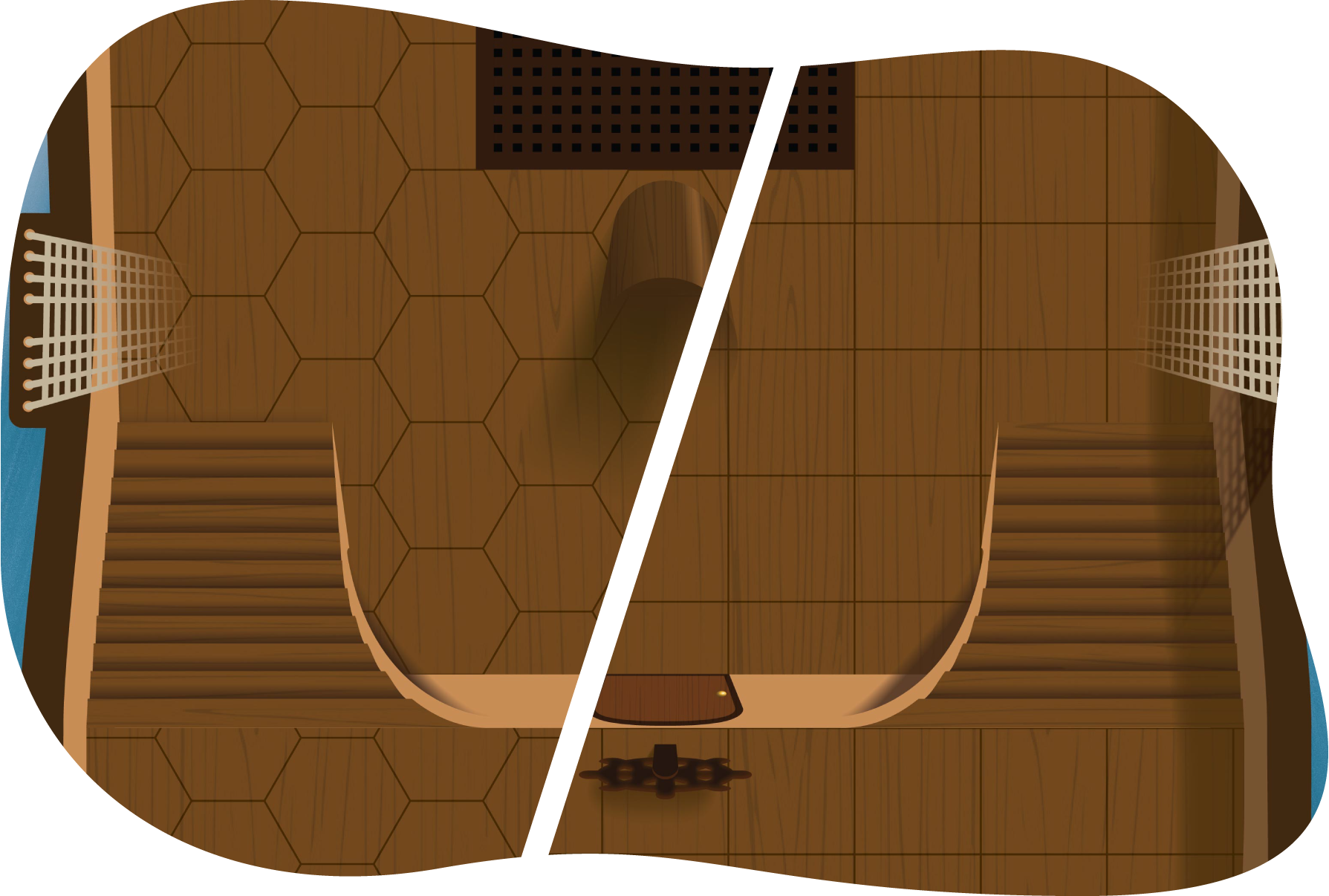 In D&D, and most other TTRPG’s, the DM’s pull out their maps when combat is about to start. These maps give everyone at the table a sense of the size of where they are, the positions of the enemies, possible hiding spots, any usable object and the exits. How they move through this space depends on their movement speed and what type of grid is used.
In D&D, and most other TTRPG’s, the DM’s pull out their maps when combat is about to start. These maps give everyone at the table a sense of the size of where they are, the positions of the enemies, possible hiding spots, any usable object and the exits. How they move through this space depends on their movement speed and what type of grid is used.
Square grid maps
The basic square grid is the most used type of map. It makes it easy to determine how far you can get in straight lines, who you can hit with a ranged attack and who is behind (partial) cover. Moving to each of the 8 surrounding squares costs 5 feet which makes it easy to count, but doesn’t really makes sense when moving diagonally. Of course you can also use the optional “Diagonals” rule (DMG p252), but that will slow the gameplay down. A small or medium creature fits in a single square and every larger size takes up a 2×2, 3×3 or 4×4 block (DMG p249).
Hex grid maps
The main benefit to using a hex grid is that moving in any direction is more intuitive and feels more correct. Moving to each of the surrounding spaces costs 5 feet of movement and it’s just a matter of counting hexes until you reach your target. The only slight drawback is that hexes are less elegant when used in the design of square buildings.
No maps
Maps are not necessarily the only way to play. There are a lot of D&D podcasts out there (learning D&D with podcasts) who take you along on their journey. When they adequately describe the scene and all players involved than a map is no longer needed. This is especially the case when only a few players battle one or two opponents in a simple area. When you choose this approach to combat, do expect to describe the elements of the scene more than once.
Conclusion
When I first started DM’ing I did not use maps. I mostly learned how to play by listening to podcasts and figured that maps were not a necessity. Although this worked for a little while, I found that when I did use maps that my players got more focussed and that there was a lot more use for strategy. I use both types of grids when I have them on hand, but because it streamlines movement my preference goes to the hex grid maps.
Whichever type of maps you prefer, make sure to add objects the players and enemies can interact with. An active environment can really make an encounter epic by letting your players do more than just swing until the enemies are dead.That is merely my personal opinion. What do you prefer? Let me know in the comments.
Are you ready to play some D&D, and do you want to further explore fantasy worlds like that of Harry Potter, Pokémon, Hunger Games or Avatar? Try out these free one-shots!